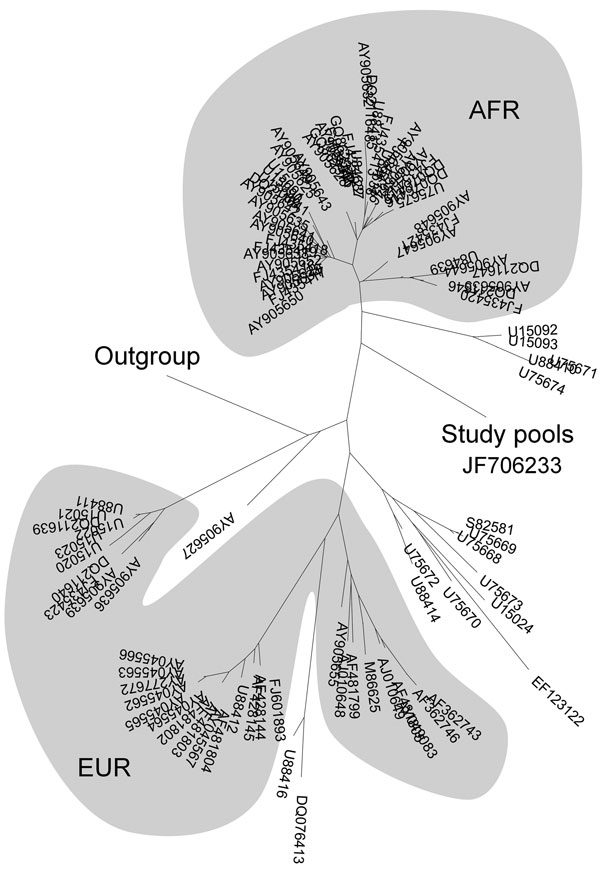Volume 18, Number 1—January 2012
Letter
Crimean-Congo Hemorrhagic Fever Virus in Ticks from Imported Livestock, Egypt
Figure

Figure. Phylogenetic relationship of 110 Crimean-Congo hemorrhagic fever virus sequences obtained from this study (6 tick pools), the positive control, and 99 published isolates from GenBank. Sequences were aligned by using ClustalX (www.clustal.org), and a phylogenetic tree was constructed by using MEGA4 (neighbor-joining, Kimura 2-parameter, complete deletion of missing data, tree condensed when bootstrap calculated branch support was <0.5) (www.megasoftware.net). The 2 shaded areas indicate clustering of African isolates (AFR) and predominantly European isolates (EUR); unshaded isolates originate primarily from the Middle East.
Page created: December 22, 2011
Page updated: December 22, 2011
Page reviewed: December 22, 2011
The conclusions, findings, and opinions expressed by authors contributing to this journal do not necessarily reflect the official position of the U.S. Department of Health and Human Services, the Public Health Service, the Centers for Disease Control and Prevention, or the authors' affiliated institutions. Use of trade names is for identification only and does not imply endorsement by any of the groups named above.